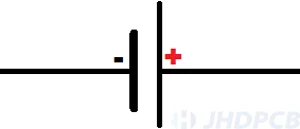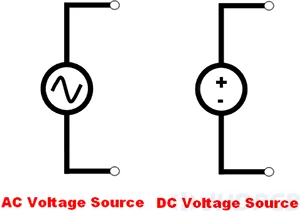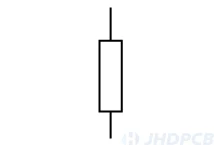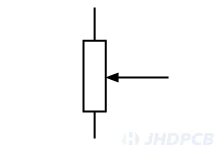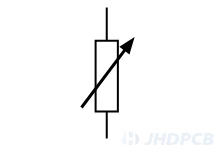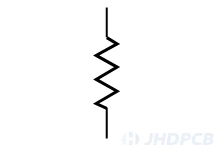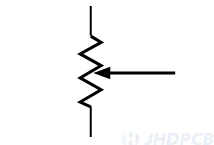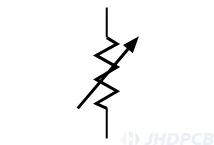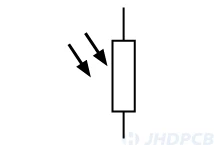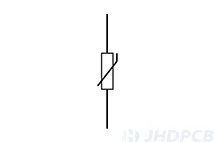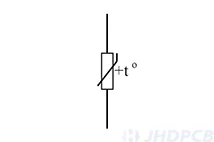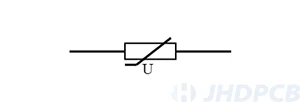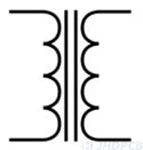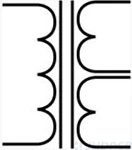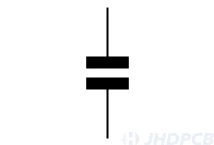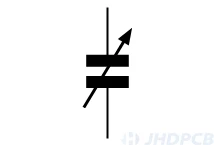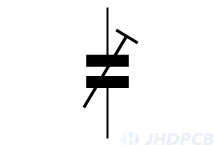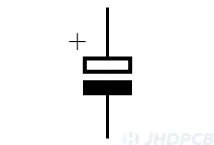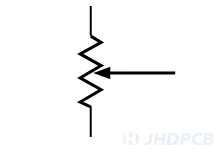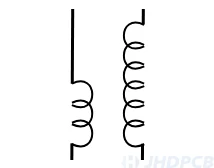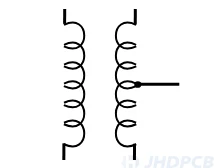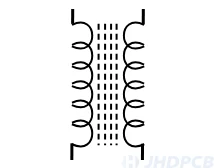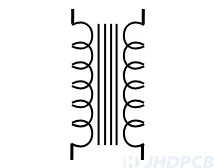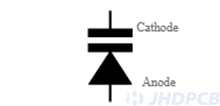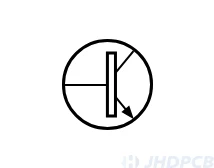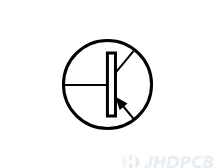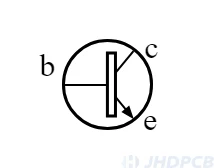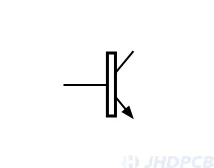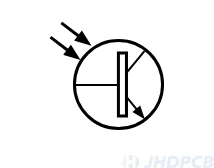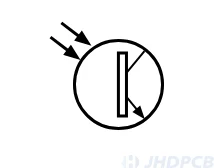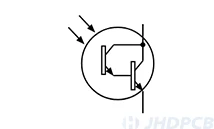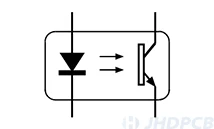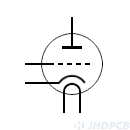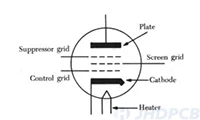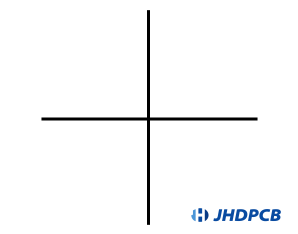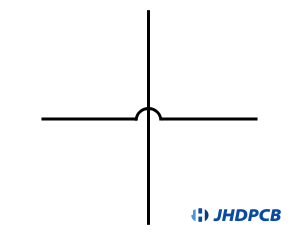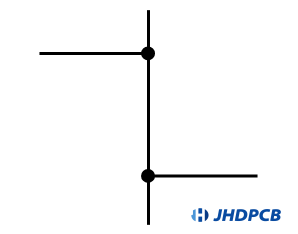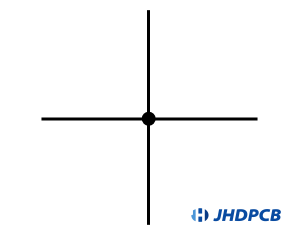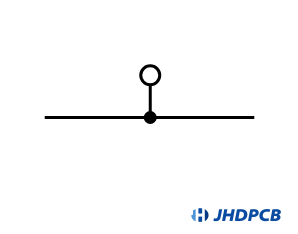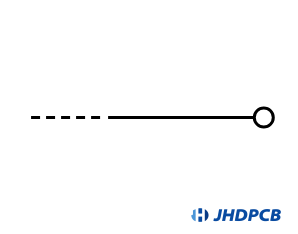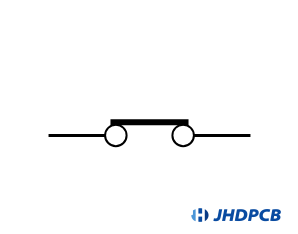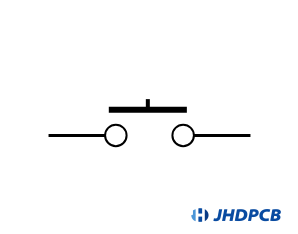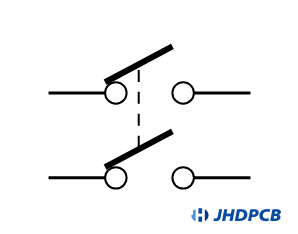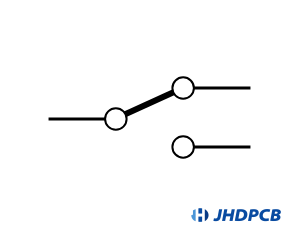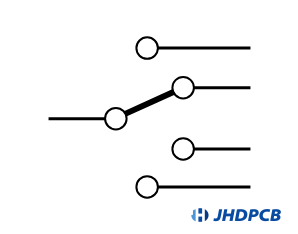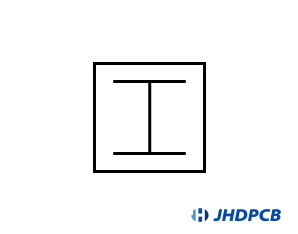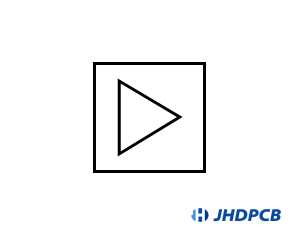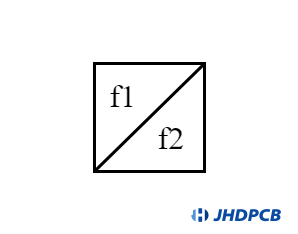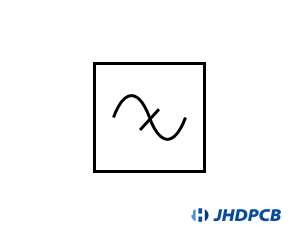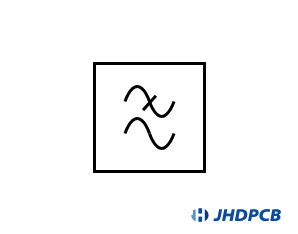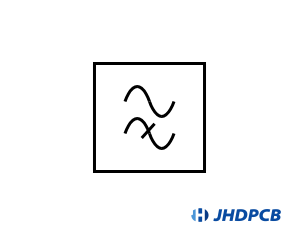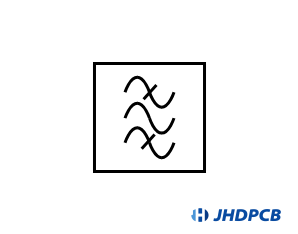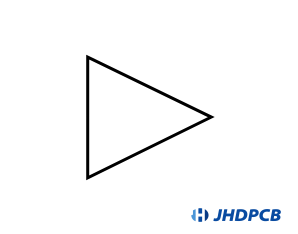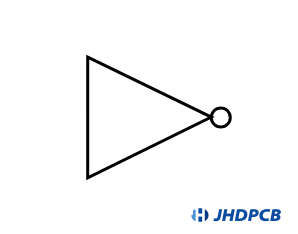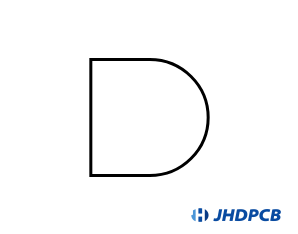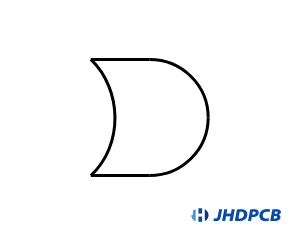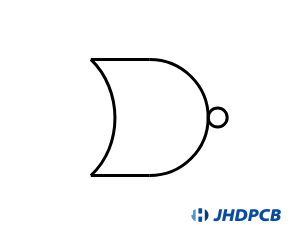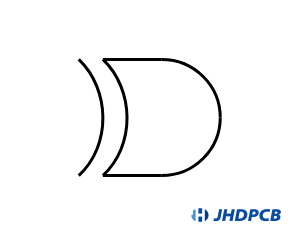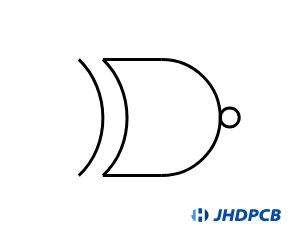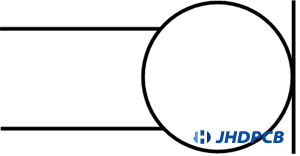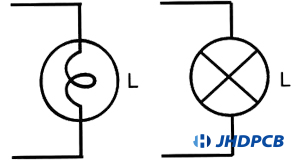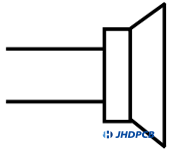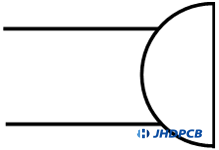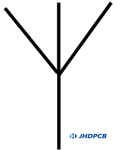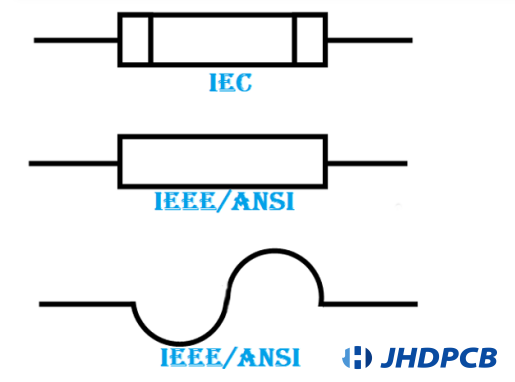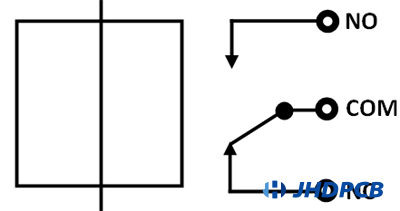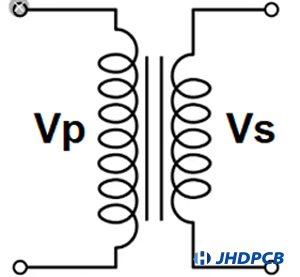PCB Symbols
For those new to the printed circuit board (PCB) design world, deciphering the various symbols and markings can be quite daunting. With countless symbols representing circuit components, connectors, and test points, it’s easy to get lost in a sea of cryptic icons. That’s why we’ve compiled a complete list of PCB symbols, aimed at guiding beginners through the process of decoding each symbol and understanding its function in a circuit.
Whether you’re an electronics hobbyist or a professional PCB designer, this beginner’s guide will provide the foundation you need to create successful circuit designs. So, let’s dive into the world of PCB symbols and start decoding!
What is a PCB Symbol?
A pcb circuit board symbol is a graphical representation used in the schematic design stage of a PCB layout process. It represents the electrical components and their connections that will be assembled on the PCB.
In the circuit board industry, the symbols used for circuit and identification purposes are commonly referred to as “silkscreen symbols”. PCB symbols are essential for the schematic design process and provide a clear, concise, and standardized way to communicate the circuit’s electrical components and connections. By understanding basic board circuit symbols and pcb components symbols, engineers and designers can effectively collaborate and create efficient, functional PCB layouts.
Experienced electronic designers often don’t require text descriptions of components as they have a reliable memory for electronic component schematic symbols. It’s important to note that schematic symbols may vary slightly depending on the region, and designers must be aware that multiple symbols may represent the same component. The electronic component schematic symbols are extensive, with over 50 common symbols used in electronic designs.
Moving on, there are two main aspects of PCB symbols: basic symbols of the board circuit and component symbols.
Basic Symbols of the Board Circuit.
Basic circuit board symbol are the foundational elements that represent the electrical connections and layout of the PCB. They include:
- Lines: Lines are used to represent electrical connections or traces between components on the schematic. They can be straight, curved, or angled, depending on the design requirements.
- Nodes: Nodes are points where two or more lines intersect, indicating a connection between the components.
- Net Names: Net names are labels assigned to a group of connected lines or nodes to signify a specific electrical connection within the circuit.
Power and Ground Symbols: These symbols are used to represent the power supply and ground connections in the circuit, such as VCC (voltage at common collector) and GND (ground).
Component Symbols of the Board Circuit.
Component symbols are graphical representations of the various electronic components used in the PCB design. They are standardized to ensure clear communication and understanding among engineers and designers. Some common component pcb board symbols include:
- Resistors: Represented by a zigzag line or a rectangle, resistors are passive components used to limit or regulate the flow of electrical current in a circuit.
- Capacitors: Depicted as two parallel lines with a gap between them (for non-polarized capacitors) or with one curved line (for polarized capacitors), capacitors store electrical energy and release it when needed.
- Inductors: Inductors are represented by a series of loops or a rectangle with a line through it. They store energy in the form of a magnetic field and oppose changes in current flow.
- Diodes: Diodes are depicted by an arrow with a line at the end, representing their unidirectional current flow properties.
- Transistors: Transistors are used to amplify or switch electronic signals and are represented by various symbols depending on their type (e.g., BJT, field effect transistors, or MOSFET).
Integrated Circuits (ICs): IC symbols vary depending on the specific IC being used. They generally consist of a rectangular box with inputs and outputs labeled, and a reference designator to identify the component. - Connectors: Connectors are represented by an outline of their physical shape with numbered pins, indicating the electrical connections.
Overall, Circuit reference designators consisting of one or two letters followed by a number are used to identify components in electronic circuits. The letters indicate the type of component, while the number defines its particular type. Meaningful abbreviations make circuit diagrams and board layouts more understandable. To standardize component identification, the IEEE introduced the “Standard Reference Designations for Electrical and Electronics Parts and Equipment.” Later, the ASME introduced the new standard ASME Y14.44-2008.
Complete list of PCB symbols.
If you’re dealing with older technology, it’s super important to brush up on your knowledge of outdated PCB schematic symbols. But even if you’re working on new projects, having a basic understanding of these symbols can come in handy. And with technology advancing at lightning speed, it’s worth checking out the new IPC standard for creating schematic symbols.
Just a heads up, if you come across two symbols for the same component, the first one is the international version and the second is the U.S. version. We’ve included the IEEE/ANSI symbols below, since they’re the most commonly used in ECAD software. But keep in mind that some PCB designers and open-source programs use IEC symbols or a mix of both. Either way, we’ve got you covered with the IEEE/ANSI symbols for reference.
Click to learn more about PCB components.
Current (AC and DC)
| Current Symbol | |
|---|---|
| Full Name | Symbol |
| Alternating Current | 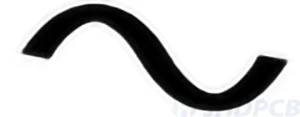 |
| Direct Current | 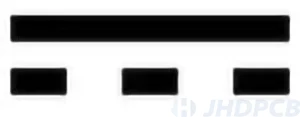 |
Power Source
When designing electronic circuits, it’s essential to choose a suitable power source. Different power sources are available, and they are represented by various symbols.
- Cell: A cell is a common power source that can provide a minimum amount of power to a circuit. The cell symbol consists of a short line and a long line separated by a small gap. The symbol represents the two electrodes used in the cell, with the long line indicating the positive electrode/terminal, and the short line representing the negative electrode/terminal.
- Battery: When multiple cells are connected, they form a battery. The battery symbol consists of several cells attached to each other. Sometimes an external element connects multiple cells to form a battery, which is represented by two cells connected with dotted lines.
- Current Source: Current sources are used in circuits that require a constant flow of current, even when there are voltage variations. The current source symbol is a circle with an arrow inside, indicating the direction of the current flow.
- Voltage Source: A voltage source provides a constant voltage for circuit operation, even if there is a change in resistance and output current. There are two types of voltage sources: AC and DC. The AC voltage source symbol is a circle with a sinusoidal wave inside, while the DC voltage source symbol is a circle with a plus and minus sign inside.
| Power Supply Symbols | |
|---|---|
| Full Name | Circuit Symbol |
| Cell symbol |
|
| Battery symbol |
|
| Current Source symbol |
|
| Voltage Source symbol |
|
Resistor
Resistors are an indispensable passive component in all electronic circuits. Despite their passivity, resistors are used extensively due to their simple yet versatile functionality.
Resistor circuit symbols appear on almost all schematic diagrams to represent this component. The symbol serves to identify the resistor and convey important information about it.
Resistor symbols correlate with the physical resistor shapes used on printed circuit boards (PCBs). Schematic resistor symbols contain data linked to the corresponding PCB footprint. This enables electronic translation from schematic design to PCB layout.
The ubiquity of resistors stems from their ability to control and limit current flow using their inherent resistance. This simple yet crucial role makes resistors fundamental building blocks in electronic circuits. Their symbolization through standardized schematic notation allows for effective communication of circuit design.
Different types of resistors, with varying characteristics, require dedicated symbols. Furthermore, schematic standards between Europe and the U.S. prescribe alternative resistor symbols.
| Resistor Symbols | |
|---|---|
| Full Name | Circuit Symbol |
| Fixed resistor (Europe) |
|
| Potentiometer (Europe) |
|
| Variable resistor (Europe) |
|
| Fixed resistor (USA) |
|
| Potentiometer (USA) |
|
| Variable resistor (USA) |
|
| Light dependent resistor, LDR |
|
| Thermistor (general) |
|
| Thermistor: PTC |
|
| Varistor |
|
Capacitor
Capacitors, like resistors, are essential passive components in electronic circuits. Capacitors perform diverse roles beyond simply coupling and filtering signals.
Decoupling capacitors are perhaps the most ubiquitous capacitors in electronics. Decoupling capacitors placed along power lines on printed circuit boards (PCBs) regulate supply voltages and filter out noise and transients. It is standard practice to include decoupling capacitors at regular intervals on PCB designs.
Given their widespread use, capacitor symbols appear on almost all schematic diagrams. Different capacitor types have distinct symbols representing important traits.
Capacitor circuit symbols convey vital information during circuit design and PCB layout. Capacitor footprints within PCB designs correlate to schematic symbols, enabling electronic translation from schematic to physical layout.
In summary, despite their passive classification, capacitors exhibit active functionality crucial to circuit performance. Their pervasive application across electronics stems from their ability to:
- Store electrical charge
- Filter signals
- Control frequency response
- Regulate power supply rails
Though simple in principle, capacitors exhibit immense versatility that has made their symbolization through circuit schematics invaluable. Standardized schematic notation for capacitors facilitates circuit design communication and consistency across electronics.
Well-chosen decoupling capacitors, in particular, can dramatically improve circuit stability, integrity, and performance. Their circuit symbols remind us that even passive components play an active role in complex systems. In-depth exploration of Decoupling Capacitors And Bypass Capacitors.
| Capacitor PCB Symbols | |
|---|---|
| Full Name | Circuit Symbol |
| Fixed capacitor (non polarized) | 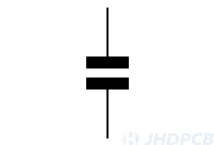 |
| Variable capacitor (operator adjustable) |  |
| Variable capacitor (preset) | 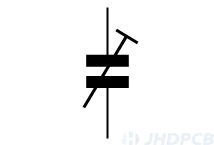 |
| Capacitor polarized typically electrolytic Capacitor PCB Symbol or tantalum (+ sign often omitted) | 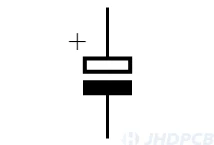 |
| Capacitor polarized (USA version) | 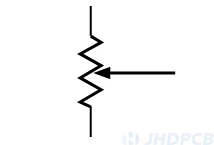 |
Transformers
Transformers utilize varying magnetic fluxes to transfer energy between circuits. A transformer consists of one or more primary windings that induce a magnetic flux in the transformer’s core, and one or more secondary windings that have voltages and currents induced by this flux.
The voltages and currents induced in the secondary windings are proportional to the turns ratio between the primary and secondary windings. Transformers can thus step up or step down AC voltages and currents.
The governing equations for ideal transformers are:
Vp/Vs = Np/Ns Ip/Is = Ns/Np
Where:
- Vp = Primary winding voltage
- Vs = Secondary winding voltage
- Np = Number of turns in primary winding
- Ns = Number of turns in secondary winding
- Ip = Primary winding current
- Is = Secondary winding current
Energy transfer in a transformer occurs via the mutual inductance between the primary and secondary windings, due to their magnetic coupling through the shared core. This enables transformers to transfer power while isolating the primary and secondary circuits from one another.
The schematic symbol for a transformer consists of two winding symbols connected by a rectangular core, representing the magnetic coupling between the primary and secondary. The turns ratio is specified within the symbol.
| Transformer Symbols | |
|---|---|
| Full Name | Circuit Symbol |
| Transformers |
|
| Transformer with Tapping |
|
| Current Transformer |
|
| Voltage Transformer |
|
Inductive Components
Inductive components like coils, chokes, inductors, and transformers come in various types and have different applications. They often utilize ferrite or iron cores.
Accordingly, circuit symbols for these components must be distinct to accurately identify them. A variety of inductor and transformer symbols exist.
While transformers are typically not used on printed circuit boards (PCBs), many chokes and inductors – along with some transformers – are PCB mounted. Therefore, PCB footprints correlate to these components’ schematic symbols.
So, due to the diverse range of inductive components, standardized symbols have developed to represent them unambiguously in circuit schematics. The symbols convey key attributes like:
- Component type (inductor, choke, transformer)
- Inductance value
- Core material
- PCB footprint (where applicable)
- For PCB-mounted inductive components, consistency between symbol and footprint enables automated translation from schematic to PCB design.
Some important differences between inductor and transformer symbols:
- Inductor symbols show a single coil to represent a single winding
- Transformer symbols show two or more coupled coils to represent multiple windings and their magnetic coupling. They also indicate the turn ratio between windings.
The ability of circuit symbols to accurately represent various inductive elements helps designers effectively communicate component information throughout the electronics product development cycle.
| Inductive Component Symbols | |
|---|---|
| Full Name | Circuit Symbol |
| Generic inductor, choke, or coil |
|
| Inductor with ferrite (iron dust) core |
|
| Inductor with iron core |
|
| Inductor tap on winding the position may be varied to approximately indicate the position of the tap |
|
| Air cored transformer |
|
| Air core transformers with unequal turn ratios can be represented by two variations of the transformer circuit symbol |
|
| Air cored transformer with tap |
|
| Ferrite cored transformer |
|
| Iron or laminated core transformer |
|
Diode
Diodes come in various types, each with a distinct circuit symbol. Some major diode categories include:
- PN junction diodes
- Schottky diodes
- Varactor diodes
- Zener diodes
- Photodiodes
- Light-emitting diodes (LEDs)
The symbol for each diode type is based on the standard diode symbol but modified to indicate its unique function. For example: Zener diode symbols show a zigzag across the diode, representing the breakdown region. LED symbols on PCB contain an arrow to show light emission from the p-n junction when forward biased. Photodiode symbols point the arrow into the diode to signify light detection.
While diode symbols indicate the cathode and anode, component designations like “D1” or “D2” are typically used instead of explicit “K” and “A” annotations. This conserves space in schematics.
| Diode PCB Symbols | |
|---|---|
| Full Name | Circuit Symbol |
| Solid-form PN junction diodes are commonly preferred, and it’s typical to omit the cathode and anode designations. |
|
| Basic PN junction diode Sometimes an outline shape is used. |
|
| Light emitting diode, LED, symbol |
|
| Photodiode |
|
| Schottky diode |
|
| Tunnel diode |
|
| Varactor / varicap diode |
|
Bipolar Transistor
The number of circuit symbols for bipolar transistors is limited, and typically consists of symbols indicating NPN and PNP transistors. Some transistor symbols are depicted with a circle around them, while others are not. The non-circled symbols are commonly used in circuit diagrams that illustrate the internal circuitry of integrated circuits, as they allow for easier inclusion of multiple emitters and other variations of the basic transistor.
In addition to these basic symbols, there are other circuit symbols for specialized bipolar transistors, such as phototransistors and Darlington transistors.
| Bipolar Transistor Symbols | |
|---|---|
| Full Name | Circuit Symbol |
| NPN bipolar transistor |
|
| PNP bipolar transistor |
|
| NPN bipolar transistor with electrodes marked |
|
| NPN bipolar transistor with no outer circle |
|
| NPN bipolar phototransistor |
|
| NPN bipolar phototransistor with no base connection |
|
| NPN bipolar phototransistor |
|
| NPN photodarlington |
|
| Transistor optocoupler circuit symbol |
|
Vacuum Tube
Vacuum tube circuit symbols:
- Diode – Two parallel lines for cathode and anode
- Triode – Three lines for cathode, anode and control grid
- Tetrode – Four lines for cathode, anode, grid and screen grid
- Pentode – Five lines for cathode, anode, 2 grids and screen grid
The standard schematic notation for vacuum tubes helps designers identify and select the tube configuration best suited for a given application. Consistent symbols also facilitate circuit documentation.
Also, the simple visual appearance of vacuum tube symbols belies their importance in communicating key component information that impacts circuit performance.
| Bipolar Transistor Symbols | |
|---|---|
| Full Name | Circuit Symbol |
| Vacuum Tube Diode |
|
| Vacuum Tube Triode |
|
| Vacuum Tube Tetraode |
|
| Vacuum Tube Pentode |
|
Field Effect Transistor (FET)
- Makes symbols consistent for a given FET type
- Facilitates accurate component selection
- Aids circuit documentation
| Field Effect Transistor Symbols | |
|---|---|
| FET Type | Circuit Symbol |
| J-FET N channel | 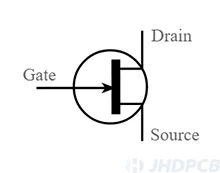 |
| J-FET P channel | 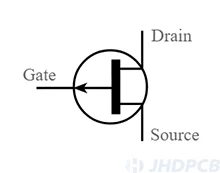 |
| Basic enhancement insulated gate FET (MOSFET) N channel | 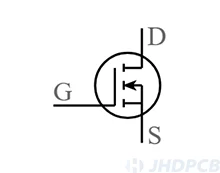 |
| Basic enhancement insulated gate FET (MOSFET) P channel | 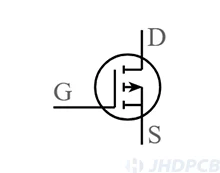 |
| Basic enhancement insulated gate FET (MOSFET) N channel no bulk semiconductor | |
| Basic enhancement insulated gate FET (MOSFET) P channel no bulk semiconductor | |
| Basic depletion insulated gate FET N channel |  |
| Basic depletion insulated gate FET P channel | 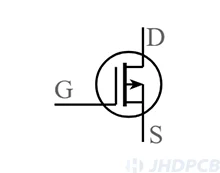 |
Wireless, Switches, Connectors
Mechanical and connectivity components like wires, cables, connectors, and switches also require appropriate circuit symbols to represent them within schematics. Though they may not actively participate in circuit operation like resistors or transistors, they are equally important parts of the system with their own symbols.
There are various types of symbols for:
- Wires – Different wire symbols represent different types of wires based on thickness, materials, and insulation.
- Cables – Cables have distinct symbols to show the number of conductors and types of shielding.
- Connectors – Various connector footprints and pinouts require unique symbols.
1.Number of poles (circuits switched);
2.Number of throws (switch positions);
Common switch type abbreviations:
SPST – Single pole, single throw;
DPST – Double pole, single throw;
SPDT – Single pole, double throw;
DPDT – Double pole, double throw;
The “throw” indicates the number of active positions, while the “pole” refers to the number of circuits switched. After double throw, switches are typically labeled by the number of ways (4 way, 8 way, etc.)
| Wireless, Switches, Connectors Symbols | |
|---|---|
| ITEM TYPE | Circuit Symbol |
| Wires crossing but not joined |
|
| Wires crossing but not joined Often used on older circuits to clarify wires are not joined. |
|
| Wire junction Note the dot at the junction. |
|
| Two wire junction |
|
| Wires crossing & joined |
|
| Coaxial cable / feeder |
|
| Test Point |
|
| Terminal Typically at the edge of a board, circuit, etc. |
|
| Switch SPST |
|
| Switch SPST normally closed |
|
| Switch SPST push button / momentary action |
|
| Switch DPST |
|
| Switch SPDT |
|
| Switch single pole 4 way |
|
Analog Circuit Block
Functional block symbols can simplify analog schematics by representing groups of components as higher-level functions.
For circuits like mixers, attenuators, filters and amplifiers, a functional block symbol can show the overall function while ignoring internal details. This avoids cluttering schematics with individual components when their specifics are unknown or unimportant.
Standardized functional block symbols let any reader understand the schematic. Component data sheets reference the relevant symbol standard for clarity.
Symbol standards like BS 3939 and IEC 60617 define analog functional block symbols. Alternative symbols provide options.
Functional block symbols convey a circuit block’s purpose without detailing its components. Also, allow designers to communicate the block’s analog function, abstracting away lower-level details. Provide consistency through adherence to standardized definitions
| Analog Circuit Block Symbols | |
|---|---|
| Block Type | Circuit Symbol |
| Attenuator |
|
| Attenuator (variable) |
|
| Amplifier / amplifying element |
|
| Mixer |
|
| Mixer (alternative) |
|
| General filter symbol |
|
| Low pass filter |
|
| High pass filter |
|
| Bandpass filter |
|
| Band Reject filter |
|
Logic Function
Standardized symbol notation for logic gates plays an important role in logically composing complex digital circuits from simpler building blocks.
| Logic Function Circuit Symbols | |
|---|---|
| LOGIC BLOCK TYPE | Circuit Symbol |
| Logic buffer |
|
| Inverter |
|
| AND gate |
|
| NAND gate |
|
| OR gate |
|
| NOR gate |
|
| Exclusive OR gate |
|
| Exclusive NOR gate |
|
Input Output Device
Input and output devices allow circuits to interface with the external world. Input/output devices let circuits receive external analog signals, drive actuators that produce perceptible output, and interface between the electronic and physical domains. Input output devices common examples include:
Microphones: Convert sound waves into electrical signals. The microphone symbol shows a unidirectional polar pattern.
Light bulbs: Produce light output from an electrical current. Bulb symbols typically show either an X shape or a loop.
Heaters: Convert electrical energy into heat. The heater symbol represents a resistive element.
The symbols for these I/O devices convey:
- The type of input or output (light, sound, heat)
- The transduction principle (piezoelectric, resistive)
- Basic directionality (unidirectional mic pattern)
Also, their circuit symbols help designers identify:how a device will interface with the circuit, appropriate drive or response requirements, and compatibility with output or input impedances.
| Input Output Devices Circuit Symbols | |
|---|---|
| Device | Circuit Symbol |
| MicrophoneBulb |
|
| Bulb |
|
| Heater |
|
Loudspeaker
Loudspeaker converts electrical audio signals into sound. The symbol shows two circles representing the positive and negative terminals.
- Buzzer: Produces a constant buzzing tone to act as an alarm. The symbol depicts a semicircle with two terminals.
- Bell: Provides an audible warning signal. The symbol is an inverted buzzer, showing two terminals connected to a circle.
- Aerial: Represents an antenna used for transmitting or receiving radio signals. The symbol uses a “footprint” shape.
Output device symbols convey:
- The type of output (sound, radio waves)
- Key features like tone (constant for buzzers)
- Polarity (terminal orientation)
| Loudspeaker Circuit Symbols | |
|---|---|
| Device | Circuit Symbol |
| LoudSpeaker |
|
| Buzzer |
|
| Bell |
|
| Aerial |
|
Protection Devices
Protection devices are integral circuit components that safeguard equipment from faults and failures. Common examples with standard symbols include:
- Fuses: Simple devices that break the circuit under high current conditions. Fuse symbols typically show a rectangular box or sinusoidal shape with terminals.
- Relays:Electromechanical switches that can open or close contacts based on the state of an energized coil. Relay symbols depict the coil and changeover contacts.
The symbols convey:
- The type of protection device (fuse, relay)
- Basic functional operation (current interruption, contact switching)
- Connection points for proper integration into circuits
Protection device symbols allow designers to visually identify device types and convey critical specifications that determine how they should be applied within circuits to effectively safeguard electronic equipment. The consistent notation of symbols facilitates circuit documentation and assists in reproducing protection strategies across different designs.
| Protection Devices Circuit Symbols | |
|---|---|
| Device | Circuit Symbol |
| Fuse |
|
| Relay |
|
Electromagnetic Devices
Electromagnetic devices are widely used in various industries and applications, with some of the most common ones being generators, motors, and transformers.
- Generator:
A generator is an electromagnetic device that converts mechanical energy into electrical energy. It works on the principle of electromagnetic induction, where a magnetic field is created by rotating a coil of wire inside a magnetic field.
This induces an electrical current in the wire, which can be harnessed for various applications. The symbol for a generator is typically represented as a circle with the letter “G” in it. - Motor:
On the other hand, a motor is an electromagnetic device that converts electrical energy into mechanical energy. It works on the opposite principle of a generator, where an electrical current is passed through a coil of wire inside a magnetic field, causing the coil to rotate and produce mechanical energy. The symbol for a motor is typically represented as a circle with the letter “M” in it. - Transformer:
Finally, a transformer is an electromagnetic device that is used to change the voltage or current of an electrical signal without changing its frequency. This is achieved by using two coils of wire wound around a magnetic core.
The coil connected to the power source is called the primary winding, while the coil connected to the load is called the secondary winding. By varying the number of turns in each coil, the voltage or current can be stepped up or stepped down as needed. The symbol for a transformer is typically represented by two coils placed side by side.
| Electromagnetic Devices Circuit Symbols | |
|---|---|
| Device | Circuit Symbol |
| Generator |
|
| Motor |
|
| Transformer |
|
Which Are the Active Components?
An active component, also referred to as an active element, is an electronic component that has the ability to provide electrical power to a circuit or amplify the power within the circuit. Active components play a crucial role in controlling and directing the flow of electrical current in a given circuit.
Examples of common active components include power sources such as voltage or current sources, devices that generate electricity like generators and alternators, and semiconductor elements like transistors and photodiodes.
Which Are the Passive Components?
A passive component, on the other hand, is an electronic component that can only absorb electrical energy and either dissipate it as heat or store it in the form of magnetic or electric fields. Passive components do not have the ability to provide electrical power or amplify power within a circuit.
Some typical passive components include resistors, inductors, capacitors, and transformers, which are essential for various functions in electronic circuits, such as filtering, energy storage, and impedance matching.
| Difference Between Active and Passive Components | ||
|---|---|---|
| Basis | Active Components | Passive Components |
| Source of Energy | Require external source of energy like voltage or current source | Do not require any external source of energy |
| Controlled by | Controlled by voltage or current signals | Are not controlled by voltage or current signals |
| Examples | Diodes, Transistors, IC’s etc. | Resistors, Capacitors, Inductors, Transformers etc. |
| Functionality | Able to amplify signals and control voltage or current | Do not have ability to amplify signals or control voltage and current |
| Current Dependency | Depend on flow of current through them | Do not depend on flow of current through them |
| Power Consumption | Generally consume more power due to presence of source | Require very less or no power for their working |
How to Verify and Test PCB Symbols?
The process of verifying and testing PCB symbols is essential for ensuring the accuracy and reliability of a printed circuit board (PCB) design. This involves checking the symbols for correctness, completeness, and consistency with the actual components they represent. The following sections outline various techniques and methods to verify and test PCB symbols, including symbolic logic verification, simulation testing, and others.
Symbolic Logic Verification
Symbolic logic verification is the process of verifying the correctness of a digital circuit’s logical representation. This involves checking the circuit’s schematic symbols to ensure they correctly represent the intended functions and connections of the corresponding components. There are three techniques for symbolic logic verification.
1. Visual Inspection.
Perform a thorough visual inspection of the schematic symbols, checking the following aspects:
- Correctness of the pin names and numbers
- Consistency of symbol shapes and sizes
- Correctness of connections and netlists
2. Symbol-to-Footprint Mapping.
Check the symbol-to-footprint mapping to ensure that each symbol has a corresponding footprint and that the footprint’s pin numbers match the symbols in numbers.
3. Logical Consistency.
Verify the logical consistency of the schematic symbols by checking their connections. This includes ensuring that input pins are connected to output pins and that there are no conflicts or discrepancies.
Symbolic Logic Verification Tools:
There are various tools available that can aid in the symbolic logic verification process, such as:
EDA tools with built-in schematic symbol checkers (e.g., Cadence OrCAD, Altium Designer, etc.)
Standalone schematic symbol verification tools (e.g., SymCheck)
Simulation Testing
Simulation testing is a method of verifying the performance and functionality of a digital circuit by simulating its behavior in a virtual environment. This can help detect errors and discrepancies in the PCB symbols before proceeding to the physical fabrication stage.
1.Time-Domain Analysis.
Time-domain analysis involves simulating the circuit’s behavior over time to observe the transient response of the system.
2.Frequency-Domain Analysis.
Frequency-domain analysis involves simulating the circuit’s behavior at different frequencies to observe the frequency response of the system.
Simulation Testing Tools.
There are several simulation testing tools available, such as:
- SPICE-based simulators (e.g., LTspice, PSpice, etc.)
- Digital logic simulators (e.g., ModelSim, XSIM, etc.)
- Mixed-signal simulators (e.g., Cadence Virtuoso, Mentor Graphics Questa, etc.)
Additional Verification and Testing Techniques
- Peer Review
Having a colleague or a fellow engineer review the schematic symbols and the PCB design can help identify errors or discrepancies that may have been overlooked. - Design Rule Check (DRC)
Running a DRC using your EDA tool can help identify issues such as incorrect symbol-to-footprint mapping, missing or duplicate connections, and other rule violations. - Electrical Rule Check (ERC)
Performing an ERC can help identify electrical issues, such as unconnected pins, short circuits, or incorrect power supply connections.
Verifying and testing PCB symbols is a crucial step in the PCB design process. By utilizing symbolic logic verification, simulation testing, and other verification techniques, you can ensure the accuracy and reliability of your PCB design, minimizing the risk of errors and reducing the need for costly rework.
PCB symbols are a vital part of the electronic design process, and their use is essential for creating clear and concise documentation. By using standardized symbols, engineers and technicians can communicate their designs effectively and ensure that everyone involved in the process understands the intended functionality.
At JHDPCB we are a high-tech enterprise that has been manufacturing a full range of PCBs since 2009. With more than 10 years of experience in the industry, we are specialized in the R&D, production, and sales of printed circuit boards. Our product range includes HDI boards, multi-layer boards, rigid-flex boards, heavy copper boards, metal substrates, high-frequency boards, flexible boards, and more. Best of best our sales area covers Europe, America, Southeast Asia, and other countries and regions. If you’re looking for a reliable PCB manufacturer that can meet all your needs, JHDPCB is an excellent choice for all your needs.
